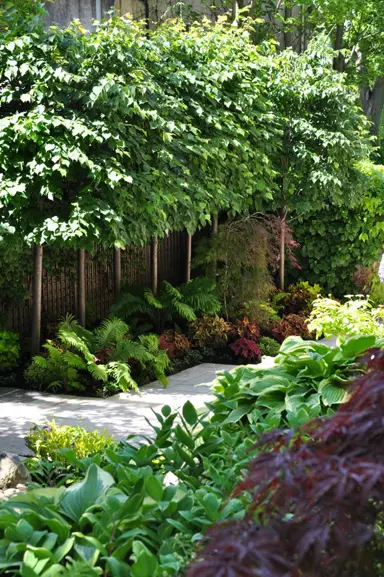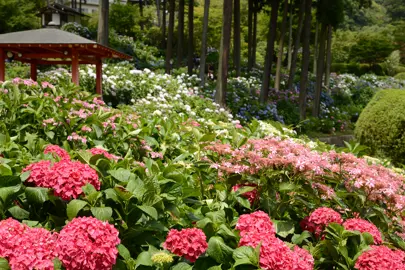
The Plant Company grows, sells, and ships Zamioculcas plants throughout NZ. We pride ourselves on producing high quality plants and seeing the joy from our customers when they receive them. We do hope you enjoy them and support this NZ business that is passionate about Zamioculcas plants.
Why? Our plants are in high demand due to our reputation for delivering high quality products at competitive prices. We may have these in production or be able to source these for you, so please feel free to contact us and our fantastic team will respond to your enquiry. Alternatively, we have a world class plant finder tool that you can use to help find alternative options.
Zamioculcas Black Knight is a very popular indoor plant owing to its dark and showy foliage. It grows as a clump and produces upright fronds which...
Zamioculcas zamiifolia Zanzibar Gem is a very popular indoor plant owing to its bright and showy foliage. It grows as a clump and produces upright...
Growing colourful plants such as ZZ plants (Zamioculcas) in your home delivers a vast range of benefits:
We have the largest variety of Zamioculcas and the right one for your space. Whether you call them zuzu plants, zanzibar gem plants, ZZ plants, or Zeezee plants, we have these amazing plants ready for you. Our plants have been selected to thrive in NZ’s climate. We grow and stock only the highest quality plants, sourcing them locally, and from NZ’s leading nurseries. Each plant is packed and transported with extreme care, ensuring it arrives to you in the same condition it was in when it left the nursery. If you are wanting to buy a ZZ plant, shop with confidence from the best in the industry.
Here are some fun facts about the ZZ plant:
Zamioculcas zamiifolia, commonly known as the ZZ plant, is a popular houseplant known for its low-maintenance nature and tolerance for various conditions. Here are the essential requirements for Zamioculcas to thrive:
By following these guidelines, you can ensure that your Zamioculcas thrives and brings a touch of greenery and elegance to your home.
Zamioculcas zamiifolia, commonly known as the ZZ plant, is a slow-growing houseplant. It typically takes several years for a ZZ plant to reach its mature height of 2-3 feet (0.6-0.9 meters). In some cases, it may take 5-10 years for a ZZ plant to reach its full size.
Zamioculcas zamiifolia, commonly known as the ZZ plant, is renowned for its remarkable longevity and can live for decades with proper care. Some ZZ plants have been documented to survive for over 50 years, making them a true testament to resilience and adaptability.
Yes, it is a good idea to keep a ZZ plant at home. They are low-maintenance, easy to care for, and can tolerate a wide range of conditions. They are also known for their air-purifying abilities, and they can remove harmful toxins from the air. Additionally, ZZ plants are considered to be lucky plants in Feng Shui, and they are believed to bring good fortune and prosperity to the home.
Here are some of the benefits of keeping a ZZ plant at home:
Here are some specific suggestions for placing your ZZ plant in different rooms of your house:
Remember, the best location for your ZZ plant will depend on the specific conditions of your home and the plant's individual needs. Experiment with different placements and observe how your ZZ plant responds to find the ideal spot for it to flourish.
The term "money plant" is often used to refer to various plants associated with wealth, prosperity, and good fortune. While Zamioculcas zamiifolia, commonly known as the ZZ plant, is not scientifically classified as a money plant, it has gained this moniker due to its cultural and symbolic significance.
In Feng Shui, the ZZ plant is believed to attract wealth, abundance, and positive energy to the home. Its upright growth habit and glossy, dark green leaves represent stability, growth, and vitality, qualities that are often associated with financial success. Furthermore, the ZZ plant's ability to thrive in low-light conditions and with infrequent watering has earned it the reputation of being a "lucky" plant. Its resilience and adaptability symbolize the ability to overcome challenges and achieve financial prosperity.
Yes, it is generally safe to touch ZZ plants, and they do not pose any significant health risks to humans. The leaves and stems of ZZ plants do not contain any harmful substances that can cause skin irritation or allergic reactions in most people. However, some individuals with sensitive skin or allergies may experience mild irritation or discomfort if they come into direct contact with the plant's sap.
If you have any concerns about touching ZZ plants, it is best to wear gloves when handling them. You should also avoid touching your eyes or mouth after handling the plant, as this could transfer any potential irritants.
Yes, it is generally safe to have a ZZ plant in the bedroom. They are low-maintenance, non-toxic, and can even help to improve air quality. ZZ plants are known for their tolerance for low light conditions, making them well-suited for bedrooms that don't receive a lot of natural light. They are also relatively drought-tolerant, so you don't have to worry about watering them too frequently.
Whether you need assistance finding the plant you’re looking for or you simply want to know more about who we are and what we do, we invite you to get in touch with us today. A member of The Plant Company team will get back in touch as soon as possible.


